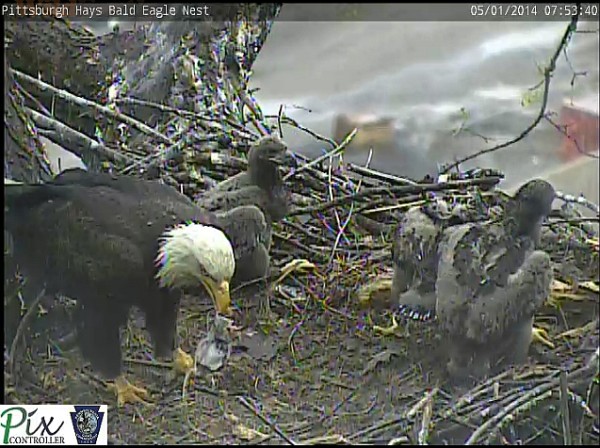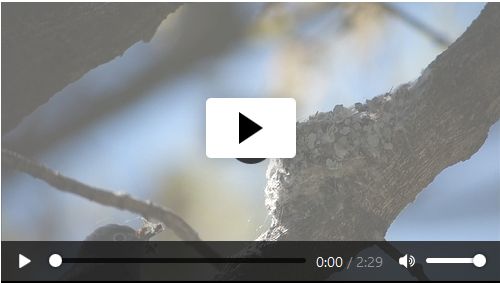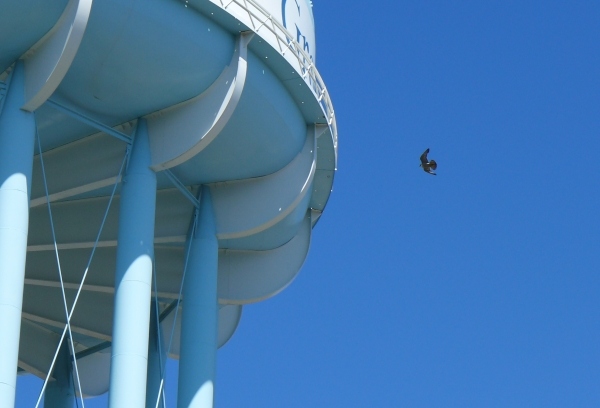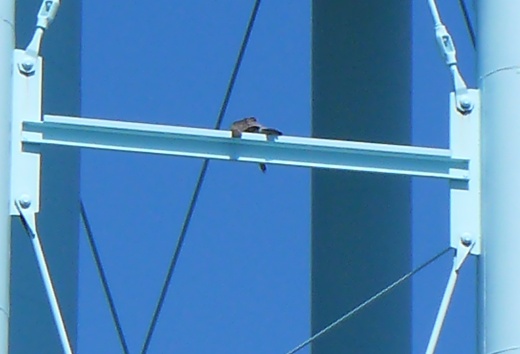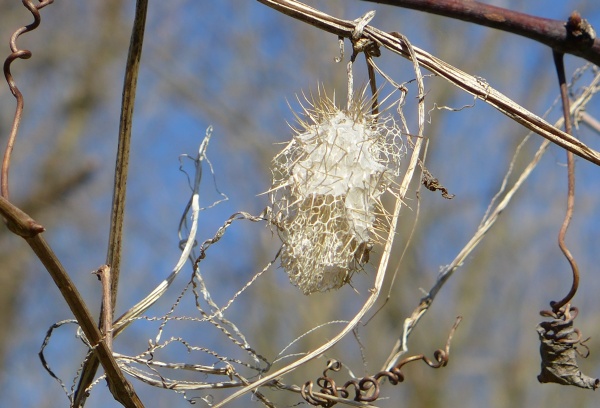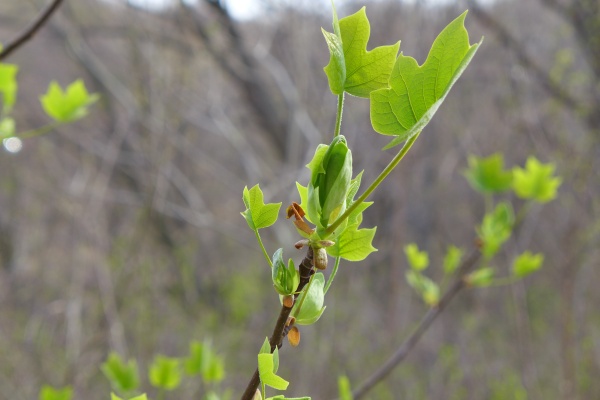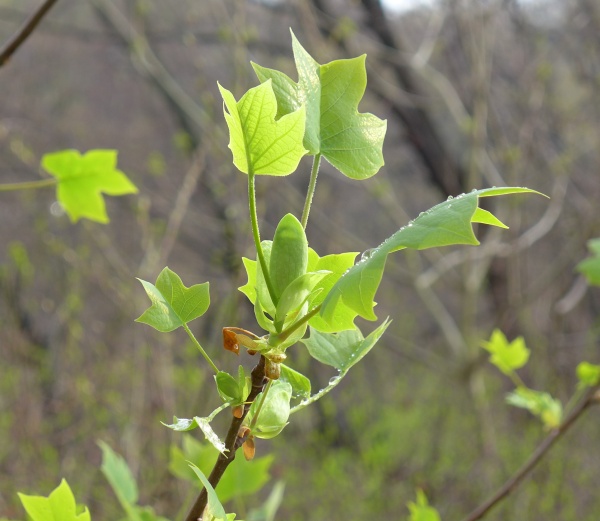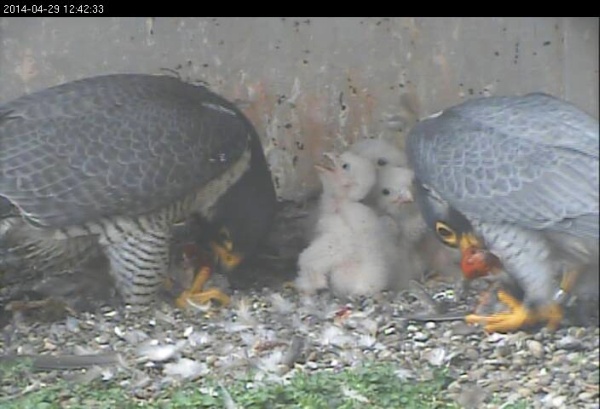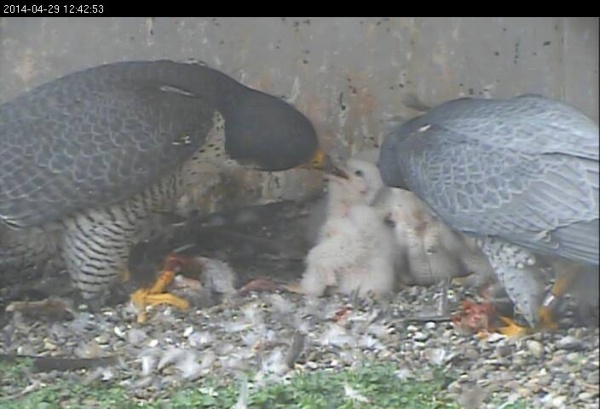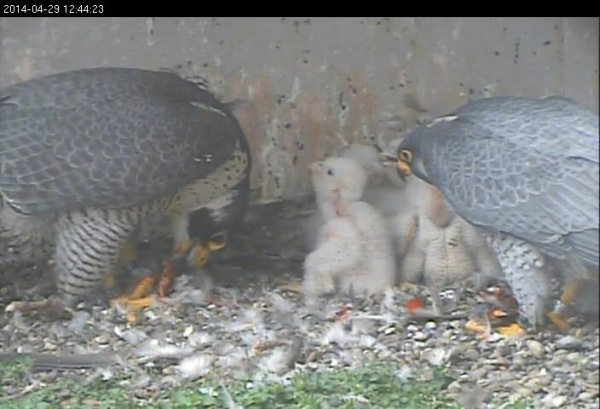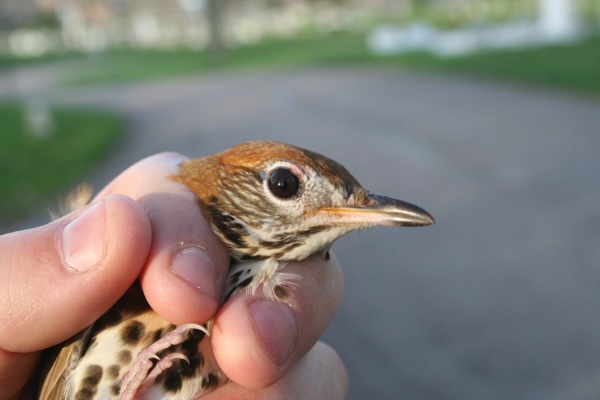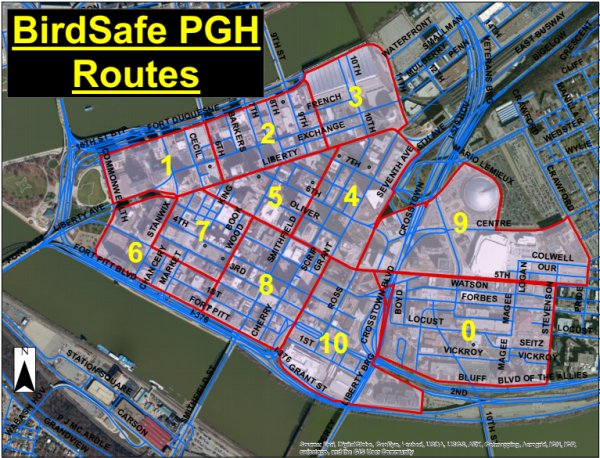Five weeks ago fans of the Hays bald eagle family were worried that the smallest eaglet would starve. That didn’t happen. There’s plenty of food and all three are thriving but a new and opposite fear has taken its place. Just across the river one possible source of food is scheduled to be poisoned. What if the eagle family eats a poisoned rat?
Bald eagles eat a lot of fish but they’re also opportunistic omnivores. If a prey item is easy to catch they’ll eat it. Eaglecam viewers have seen the family eat many fish, some birds and quite a few rats.
No one thought much about Rats As Food until a bankrupt business across the river in Hazelwood made the news. The privately owned Pittsburgh Recycling Center closed its doors in January and walked away leaving behind stinking piles of garbage and lots of rats. Over the winter the rats multiplied and overflowed into the neighborhood. Nearby residents became so upset that they held a protest outside the warehouse last Friday.
On Monday the old warehouse was sold and the judge ordered the new owner to clean it up right away. Hazelwood breathed a sigh of relief that the rats would be poisoned but the eagle watchers began to worry. The Hays bald eagles are known to eat rats (see snapshot above). If they eat a poisoned rat it will kill them.
U.S. Fish and Wildlife knows this all too well. In 2009 they worked out a careful plan to kill the rats on an Aleutian island that had been a seabird nesting site 200 years ago. They air-dropped poisoned bait cakes, the rats died, the seabirds came back to nest. Only one thing went wrong. They found the corpses of 43 bald eagles, 213 glacuous-winged gulls and a peregrine falcon. Toxicology tests on several victims showed the project’s brodifacoum had killed them. USFW’s Bruce Woods told Scientific American that with further study “we will attempt to figure out what we can do better.”
How likely is it that the Hays eagles will eat a rat from the poisoned warehouse? We don’t know… but the warehouse is just a short flight away as seen by this snapshot from the eaglecam. The red arrow points to the big white roof of the old warehouse.
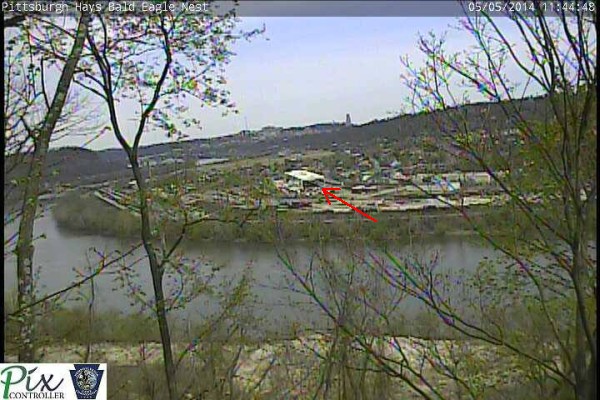
The eagle watchers are so concerned that they’ve contacted the newspapers and television, started an online petition, and written letters to the Allegheny County Health Department and County Executive Rich Fitzgerald. (The County Health Department is in charge of rat cleanup.) These efforts have made everyone aware of the potential problem.
The rats are multiplying and have got to go. To do it right without harming wildlife will take some ingenuity. Fortunately, the pressure of the eagle watchers is making everyone put on their thinking caps.
p.s. Peregrine fans: Notice the obelisk on the horizon above the red arrow’s tail in the scene above. That obelisk is the Cathedral of Learning, home to peregrine falcons Dorothy and E2. As you can see, the eagles’ home is an easy commute for the peregrines.
(snapshots from PixController’s Pittsburgh Eaglecam. Click on the eagle photo to watch the eaglecam.)
